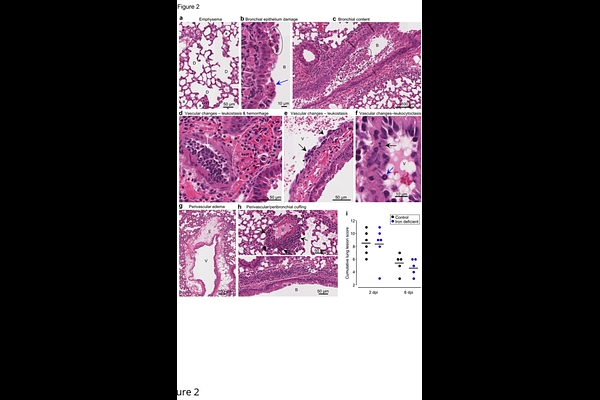The effects of iron deficient and high iron diets on SARS-CoV-2 lung infection and disease

The effects of iron deficient and high iron diets on SARS-CoV-2 lung infection and disease
Carolin, A.; Frazer, D.; Yan, K.; Bishop, C. R.; Tang, B.; Nguyen, W.; Helman, S. L.; Horvat, J.; Larcher, T.; Rawle, D. J.; Suhrbier, A.
AbstractThe severity of Coronavirus disease 2019 (COVID-19) caused by the severe acute respiratory syndrome coronavirus 2 (SARS-CoV-2) is often dictated by a range of comorbidities. A considerable literature suggests iron deficiency and iron overload may contribute to increased infection, inflammation and disease severity, although direct causal relationships have been difficult to establish. Here we generate iron deficient and iron loaded C57BL/6J mice by feeding low and high iron diets, with mice on a normal iron diet representing controls. All mice were infected with a primary omicron XXB SARS-CoV-2 isolate and lung inflammatory responses were analyzed by histology, immunohistochemistry and RNA-Seq. Compared with controls, iron deficient mice showed no significant changes in lung viral loads or histopathology, whereas, iron loaded mice showed slightly, but significantly, reduced lung viral loads and histopathology. Transcriptional changes were modest, but illustrated widespread dysregulation of inflammation signatures for both iron deficient vs. controls, and iron loaded vs. controls. Some of these changes could be associated with detrimental outcomes, whereas others would be viewed as beneficial. Diet-associated iron deficiency or overload thus induced modest modulations of inflammatory signatures, but no significant histopathologically detectable disease exacerbations.